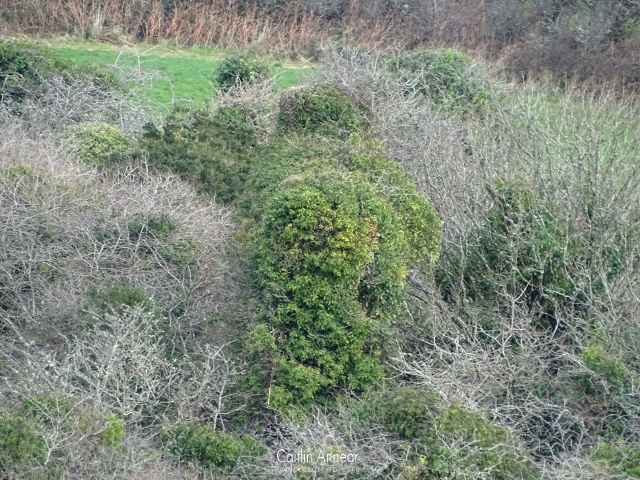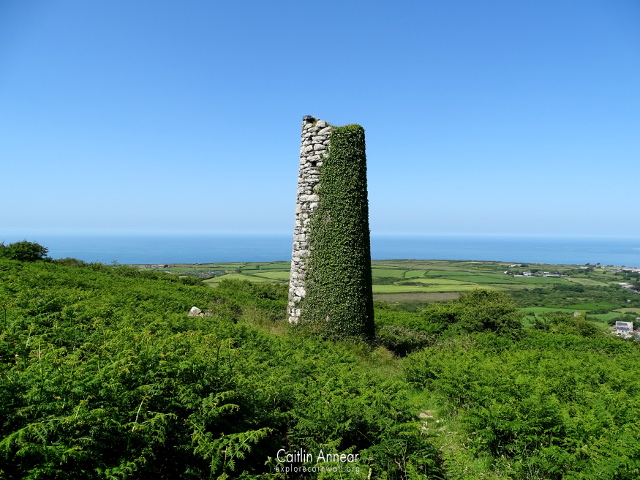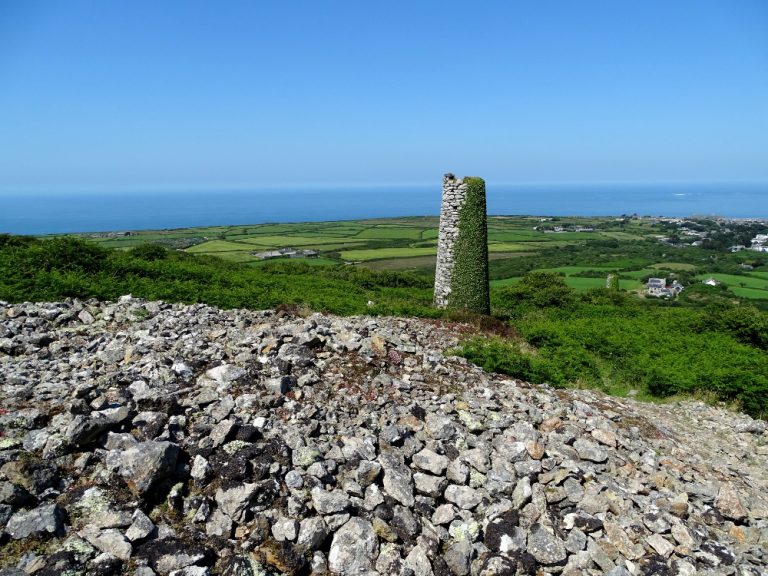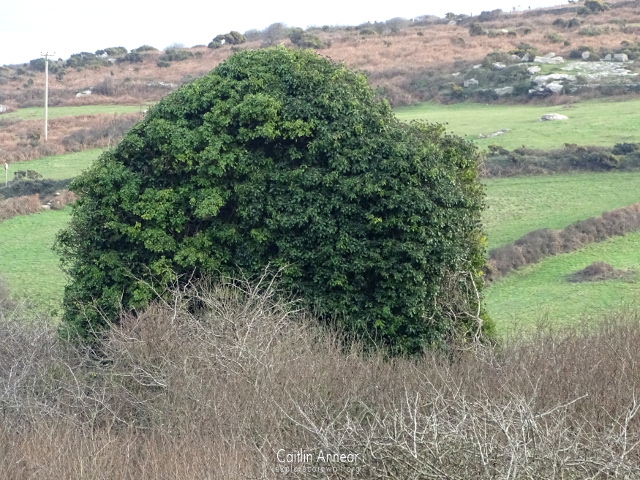On the side of Rosewall Hill sit two prominent chimneys, belonging to the former Rosewall Hill mine.

The overgrown remains of the 40″ pumping engine.
Records for this mine date back to the 17th century, although was likely at work long before this. By 1811 the mine had already reached 321 fathoms (587m) below adit, but work ground to a halt in 1817 due to mounting debts.
From 1818, both Rosewall Hill and its later counterpart Wheal Ransom were part of St Ives Consols. In 1838 it was at work under the name Rosewall Hill and Gweans Mining Company, however ran into financial trouble again four years later. In 1857 Rosewall amalgamated with Wheal Ransom where it worked on and off, eventually closing in 1876 due to low tin prices. It became part of 1908 the mine was worked for the final time as part of St Ives Consolidated Mines.

The most notable feature of the site is the two chimneys which stand on the slope of the hill. These date from earlier workings of the mine, with the remains of any associated engine houses long covered by gorse and bushes. The upper chimney belonged to a 20″ Boulton & Watt whim sold in 1842, while the other to a 36″ Harvey’s pumping engine.
At the base of the hill is the bob wall of a 40″ pumping engine made by Copper House Foundry on Great Ransom shaft. This was originally installed at Wheal Trenwith, moving to Rosewall Hill mine in 1857. Just beyond this is the site of a 22″ whim engine, while even lower down the hill on private land is the bushy remains of a 32″ stamps. This was also second hand from Wheal Trenwith in 1858. There may have also been another beam engine installed on Old Engine shaft between 1838-42.
Kernick’s, Old (20 fathoms/37m), Ivey’s (30 fathoms/55m), Footway (20 fathoms/37m), Wheal Winze (50 fathoms/91m), Martin’s (73 fathoms/134m), Fane’s/Rosewall (70 fathoms/128m), Ladder/Harris’ (72 fathoms/132m), Praed’s/Old Engine (100 fathoms/183m), Tredinnick’s/Penberthy’s (70 fathoms/128m), New Engine (166 fathoms/m), Great Ransom (115 fathoms/304m), Ransom Whim (110 fathoms/201m), Townplot (70 fathoms/128m) and Wheal Mary’s/Noat’s.
Main and Wheal Winze.
1839-59 and 1876
1,500 tons (1,524,070 kg) of tin.

Access to the chimneys is free to all via National Trust land. The remains of the pumping engine house sit in a very overgrown patch of land alongside a public footpath, while the stamps sits completely on private land. Both engine houses are easiest to see from the paths above.
There is a small free carpark at the base of Rosewall Hill.
Dines, H. G. (1956) The metalliferous mining regions of south-west England. British Geological Survey.
Gossip, J. (2001) Rosewall and Little Trevalgan Hills. Available at: https://map.cornwall.gov.uk/reports_event_record/2001/2001R006.pdf.
Nance, D. and Brown, K. (2014) A complete guide to the engine houses of West Cornwall. Gloucestershire: Lightmoor Press.
Rose, P. (2009) West Penwith surveys 1980-1990, Historic Environment Projects.
Sharpe, A. (2008) St. Just Environmental Improvement Works, Cornwall: The results of an archaeological watching brief and consultancy during conservation and safety works to sites in the mining district 2002-2006. Available at: http://map.cornwall.gov.uk/reports_event_record/2008/2008R062.pdf.


